
Everything is a-OK! I wonder if the OK symbol actually came from this ancient Buddhist gesture?
There is something magical about Nepal. It’s hard to put your finger on it, but when you’re there, it feels like you’ve arrived somewhere really special. Maybe it’s because of the imposing nature and mountains, or perhaps it’s the ancient temples and sacred sites that are present everywhere you go, or possibly the unique do-good Buddhist culture set in a Communist country. Nepal is a small country, ruled by a Monarchy for generations up until a few years ago, and tucked away in the mountains between India and China. With the exception of a handful of small cities (Kathmandu being the capital), much of the population lives in remote villages, disconnected from the world, and continues a traditional way of living. It’s really a place where you have an opportunity to go back in time.
Arriving to Nepal from India, the transformation both amazed and humbled us. Although the two countries border each other and share many similarities, they are very different and it’s apparent from the moment you step foot in the middle of the country.
Nepalese people are much more gracious and mild in their behavior. Gone was the aggression that you often witnessed in India. Gone was the noise, the heat and the overcrowding. People seemed much more hospitable and trusting of one another. Even though they did not necessarily have much more than their neighbors to the West, they seemed happier and more content with what they did posess.
The country has recently undergone a civil war which is still fresh in everybody’s memories. It ended a few years ago and although there has been some political instability between the latest government and the Maoists, Nepal is a relatively safe place to visit – especially for Western tourists, who are not involved in their internal politics. The top danger in these places come more from every day things, such as riding in buses or crossing the roads, rather than anything else.
All things considered, I think that Nepal is one of the best-kept secrets for travelers looking to enjoy nature and outdoors, history and culture, and just get away from it all – on a budget. If you’re interested in a more detailed account of our short detour to Nepal, along with more pictures, please enjoy the following:
The Decision to Go to Nepal
“What if we go to Nepal,” said Tolik lifting his head up from the Lonely Planet guidebook.
Our original plan was to head up to the Himalayas in the North of India for a few days of trekking. However, the train tickets we booked in that direction turned out to be waitlisted, which meant that it was a gamble now – we may have gotten the seats or we may have had to ride on the floor for 12 hours. Either way, it made sense to consider other options, so we were researching our possibilities.
Nepal certainly seemed as an appealing alternative. It was relatively close by – a train, couple of buses, and some walking – and we could be there within 24-48 hours. Visas can be received upon arrival, so that meant that we didn’t need to spend any additional time filing the paperwork. And we probably would not get an opportunity to go there again for years, if ever, as it’s not the easiest place to get to.
So, after doing some research on the safety situation and the logistics of getting there, we decided to go for it.
Getting to Nepal by land from India is relatively easy. There were several possible approaches, but our path consisted of taking an overnight train from Varanasi to a city called Gorakhpur. From there, it was just a short 3-hour bus ride to the border.
Ironically, when we booked the tickets for the train, we were only able to get one ticket. But, that was better than nothing. We figured that we’d be able to share a sleeping bunk and simply hide Tolik when the tickets were being checked. The plan worked surprisingly well – although, I have to admit that those bunks are not really designed to fit 2 people…
After getting to Gorakhpur in the morning, we caught a bus heading to a town called Sunnauli – on the Indian side of the border. The ride was uneventful, but as our bus was approaching the border, we stopped because of a huge line of trucks and other vehicles ahead of us. Since everybody was pretty much stopped and we were relatively close, we stepped out of the bus and simply started walking.

Making our way to the border by foot
Crossing the border was amazingly simple. In fact, nobody even stops you to check for documentation. You simply had to take a detour to the immigration office to get a visa for your stay and that was it. And then you simply walk into Nepal.

And we're in Nepal!
Once we crossed into Nepal, we decided to head into a city called Pokhara – 3rd largest city in Nepal and a starting point for a lot of great hikes and treks.
From the border, there were frequent buses headed towards Pokhara, but there was something unusual about the way they operated. There were only buses leaving in the morning and the evening – but nothing in between. That wouldn’t be so weird, except that the buses leaving in the evening, were departing from 5pm until 8pm, but were all arriving at the same time. For some weird reason, they were all purposely stretching out the 250km journey over a period of almost 10 hours in order to avoid arriving to Pokhara in the middle of the night.
However illogical it seemed, we missed the morning “tourist” bus, so we booked a ticket for an evening “local” one. It’s very interesting how these places typically have expensive, A/C buses for tourists or dirt-cheap, but shabby ones for everybody else.

Calling home during some quiet time. Man, the satellite phone is great!
After bumming around for a few hours, making a few calls and researching where we’re going to stay the following couple of days, we headed to the bus stand.
It seemed pretty odd that with the exception of a couple of other people, we were the only ones there. “Was there so few people headed to Pokhara”, we thought. Suddenly, in a typical Indian fashion – with horns blaring – an old bus showed up in the distance. The next few moments were so surreal, they were almost out of a movie.
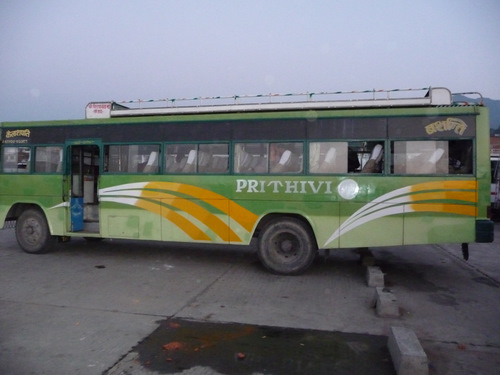
Nepalese buses - this picture was taken in the morning, after arrival.
A whole bunch of people appeared out of nowhere – from the bus stand, bus itself, ticket counter, etc. They grabbed our bags and started moving them to the roof of the bus. Since all of the luggage goes on the roof, they have a person who rides the entire way on the roof as well, guarding the bags from potential theft.
Once we saw that the bags made it upstairs, Tolik and I stepped on the bus and stopped in our way. To say it was crowded would be an understatement. Every seat was occupied and people standing and sitting in the aisle. Every spare inch of the floor occupied by bags and various containers. The seat numbers that were written on our paper ticket didn’t seem to count for much since there were no available seats, plus it seemed unlikely that we’d be able to communicate our plight to anybody – partially because of the language barrier, partially because nobody actually cared.
But spending two months in India teaches you to take things as they are, so as unappealing as the prospect of riding for 10 hours standing up in a crowded bus seemed, it was something that wasn’t completely shocking anymore.
Fortunately, some guy appeared out of nowhere and started to check everybody’s tickets and was able to recover our seats for us. The people that were occupying our seats moved to the back or to the roof and we plopped down in our space. And we were off…
After going for about an hour, the bus came to a stop in front of a series of small food shops in a tiny village. Suddenly, the bus got surrounded by very talkative Nepalis and something interesting began to happen. All of the bags and containers that were lying idly of the floor of the bus were now moved out of the bus through the windows. The people inside the bus were collectively pushing them out, while the people outside were receiving them and moving them away. Finally, we figured out that it’s how the inventory of all those soft drinks, snacks and other food staples make their way to these shops!
When the goodies were cleared, the guy that got us our seats came up to us and asked if we want to ride outside. It took us a little while to understand that he was asking if we want to ride on the roof. Although I was quite comfortable in my recently acquired chair and was not particularly eager to give it up, Tolik jumped at the opportunity and quickly climbed out of the window on the roof of the bus. Before I knew it, he disappeared out of sight, his seat was occupied by another passenger who immediately fell asleep, and the bus was on its way.
Amazingly enough, all of these oddities aside, the bus trip actually went really well. Tolik eventually returned from the roof, we were able to get some sleep, and arrived to the destination as planned.
Paragliding in Pokhara
Pokhara turned out to be a little tourist town situated on a beautiful lake with the Himalayas in the backdrop. Upon arriving in the morning, we settled in a guesthouse and went out exploring. Pokhara offers a number of activities for its guests, ranging from numerous trekking options to extreme sports and so on. It didn’t take long before we came across a few companies offering paragliding.
Paragliding, essentially, is a recreational flying sport where you fly with a parachute but without using an engine. It’s actually really fascinating – you launch by simply walking/running into the wind. Once you launch, it’s a very stable and calm flight – so, stable, it’s hard to believe you’re flying. Using hot air currents, called thermals, you are able to climb to a higher elevation and stay up in the air for hours.
All in all, it’s a very safe sport and since the organization seemed legitimate with a few foreign pilots, we decided to go for it. So, without further ado:

Setting up the parachute.
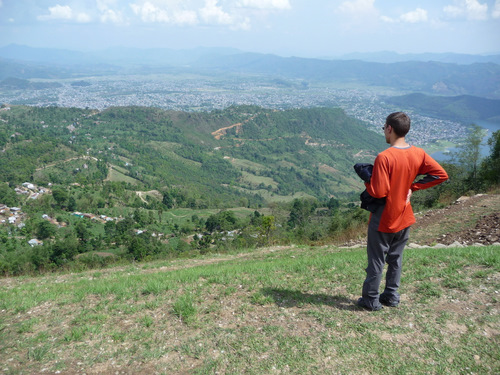
Tolik looking down from the hill. Can you imagine that the way you start the process is by running down the hill and then jumping?!

It's almost like a flying a kite. A really giant kite... with you attached to it.
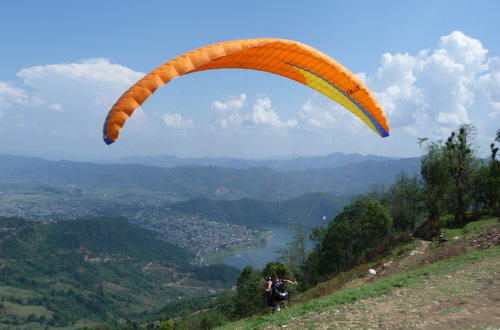
Start walking, then speed up to a jog...
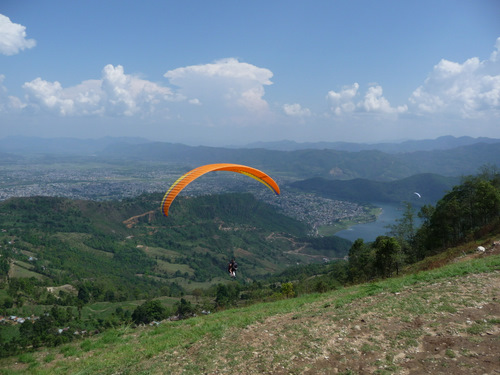
Off you go!

It is absolutely amazing how calm and steady it is up in the air.


And the views are quite beautiful, as well.
Trekking in Annapurna
One of the top reasons tourists flock to Nepal is for trekking opportunities it has to offer. Although Everest is not quite in our league, we planned to do an overnight hiking trip in another popular mountain range, Annapurna. Since we were a bit short on time and didn’t have the opportunity to do enough research to prepare fora hike on our own, we decided to hire a guide for the two days.
Ironically, the guide turned out to be a mixed bag. Although he was semi-helpful, he underestimated our speed, so we wound doing the entire 2-day trek in about 10 hours – which kind of defeated bringing the tent and other gear with us.
But that aside, it was very enjoyable. As you hiked through the mountains, you were passing by tiny villages, rice terraces, and so on. The most interesting aspect was the fact that they did not have any roads leading up to them, just small foot paths through the mountains – so the only way to reach them was by walking.

Local standing on a hill.

Can you spot an outsider? These guys loved the dried apple snacks that we brought.

Going back to the hunter/gatherer days.

Unfortunately, the visibility atop of the mountain was poor due to fog..

Local carrying a basket on his back using his head as leverage..
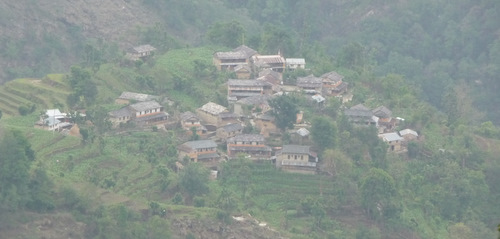
Village tucked away in the hills.
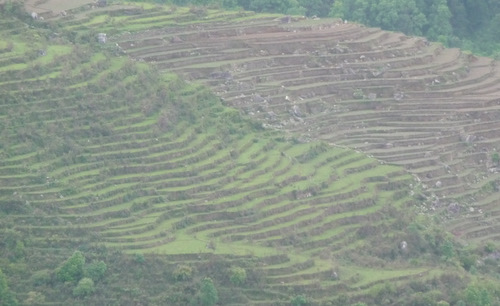
Rice terraces.
Kathmandu
Our flight out of Nepal from from Kathmandu, so we headed there for our last day.
It’s one of the most unusual cities I’ve ever seen. The combination of the architecture, temples, people and everything in between is enough to have you wandering around for days. Unfortunately, we only had a few hours:
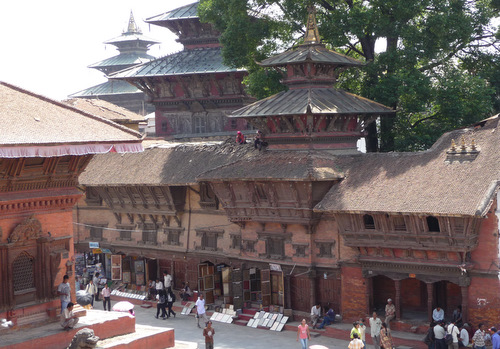
Durbar Square
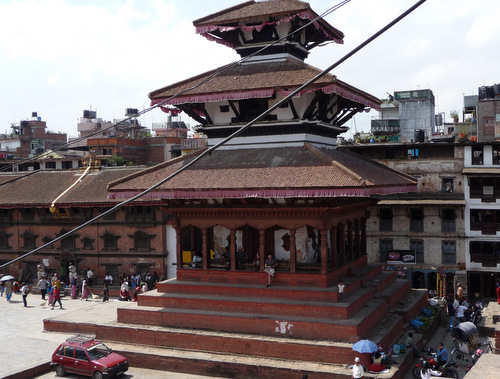
Typical temple in one off the squares
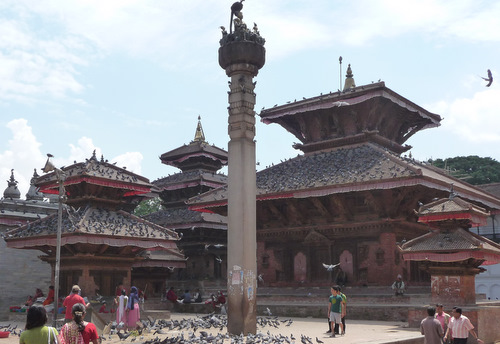
The temples are everywhere!

Local girls. For some reason, many people were walking around with surgical masks on.
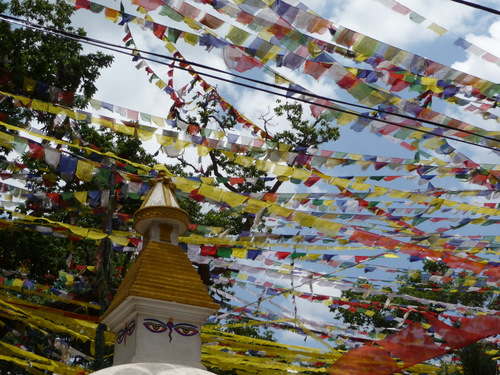
Many of the temples are decorated with these colorful things. Although they look like flags, they are actually pieces of cloth with script and text on them.

Buddha - I believe you've you heard of that guy 🙂
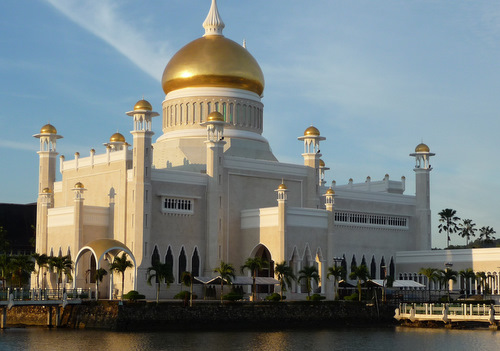
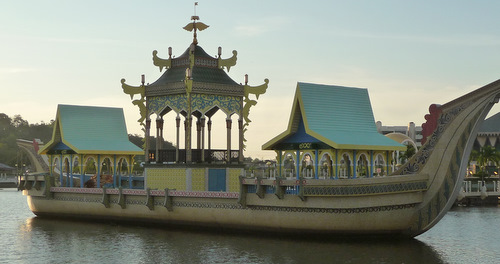

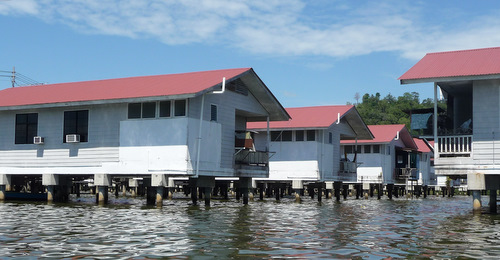
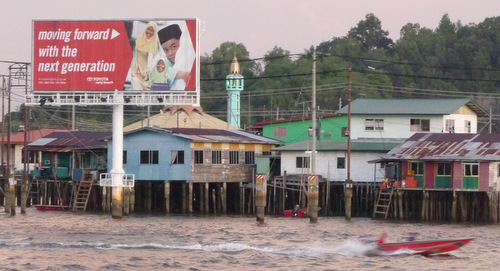

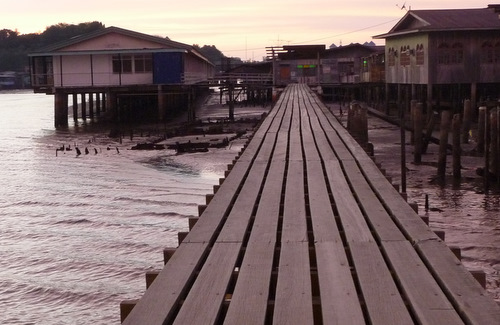




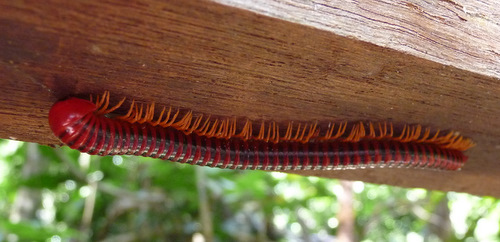




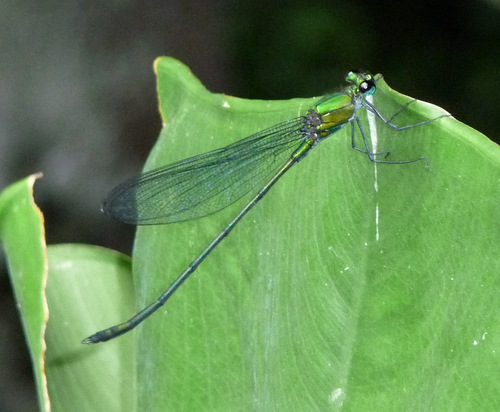
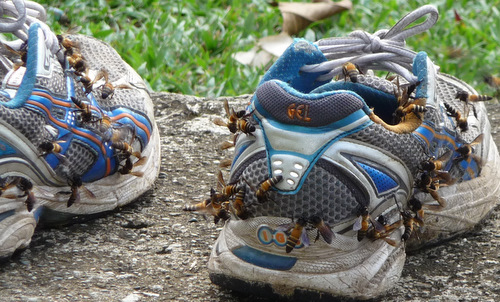
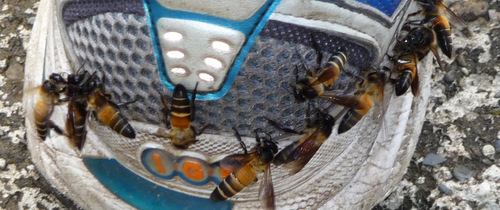

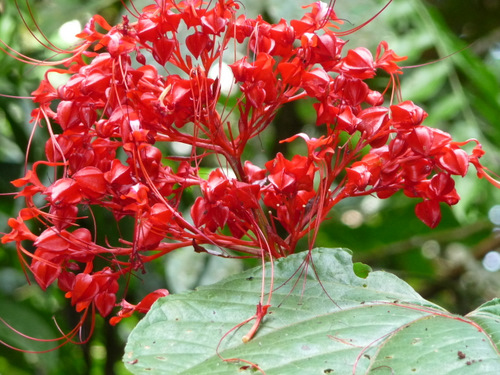






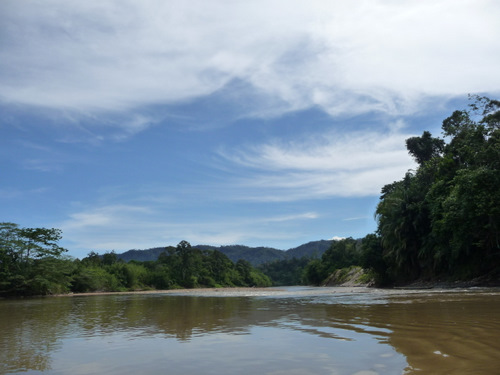
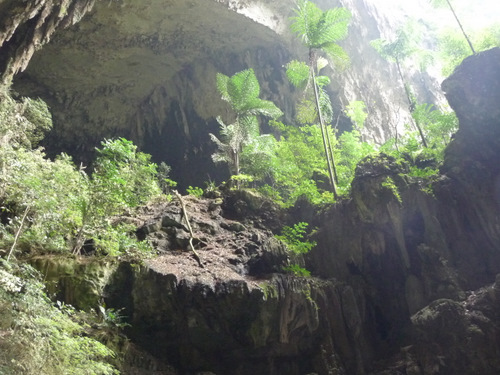
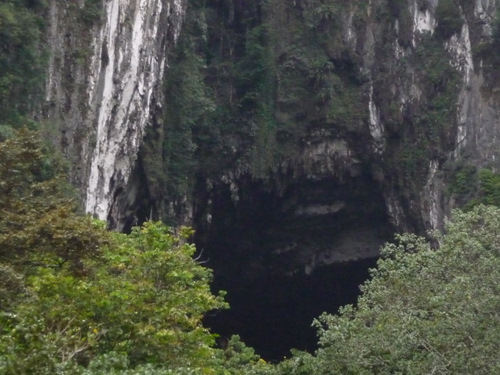

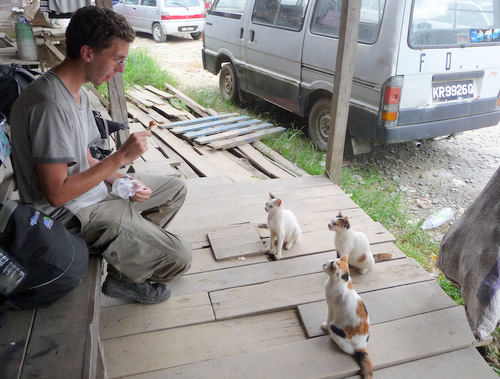
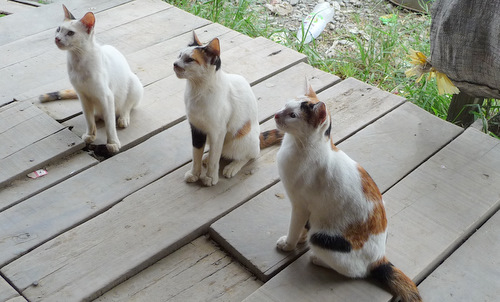

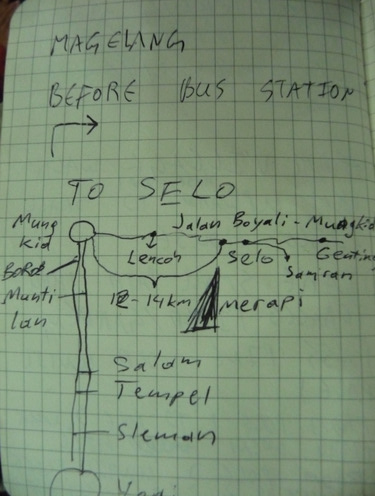

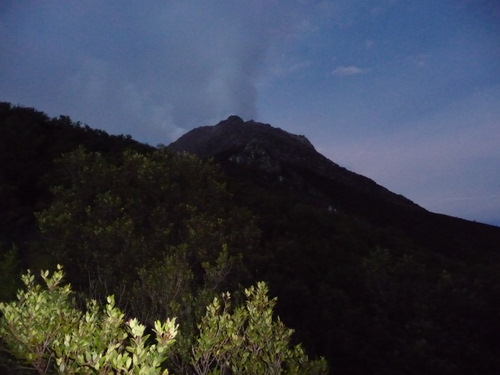
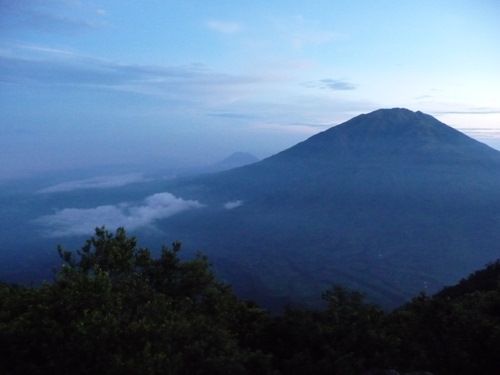
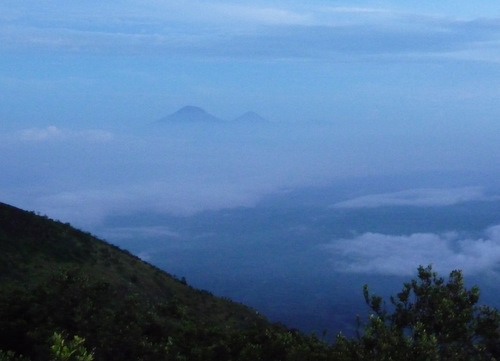




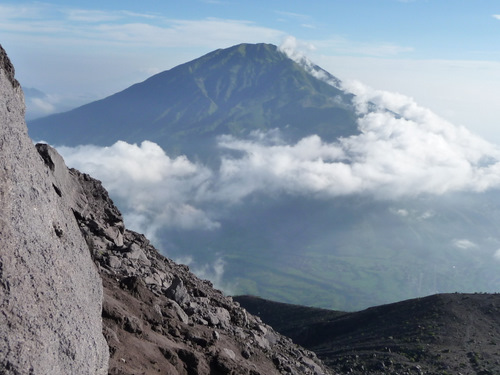
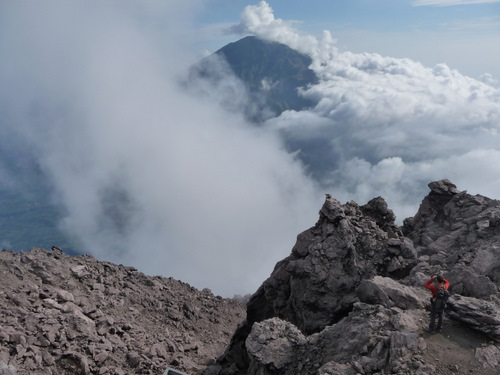



























Recent Comments